
Read more
Blog, Migration Governance
The New Chilean Government and its Shifting Attitudes on Migration Governance
Chilean President Sebastián Piñera has started his second term in office – his first presidency was 2010-14 – with a strong shift on migration policy and governance. The inability of the previous President, Michele...
As the recent elections in March 2018 confirmed, immigration is a highly salient issue in contemporary Italy. The latest publication of the Special Eurobarometer survey on the integration of immigrants in the European Union (Special Eurobarometer 469) allows for preliminary comparisons between Italy and the rest of the European countries. Do Italians differ significantly in their views regarding immigration from outside the EU compared to other Europeans? And if so, in what particular aspects do they differ?
- Italians are significantly more likely to see immigration as primarily an illegal phenomenon than the rest of Europe. While the majority of Europeans believe that there are more immigrants from outside of the EU staying legally, the majority (47 %) of Italian respondents believes that there are more immigrants who are staying illegally in their country. In comparison, only 16 % of Italians believe that there are more immigrants who are staying legally and 25 % believes there is about the same number of legally and illegally staying immigrants. This is likely due to the fact that Italy is one the primary countries of entry for immigrants coming from outside of the EU.
- Italians tend to overestimate the proportion of the population who are immigrants compared to the EU-average. At large, Europeans tend to overestimate the proportion of immigrants in their countries with the average European perceiving the proportion of the immigrant population as twice the actual size. However, Italians estimate the proportion of the population who are immigrants as at least three and half times greater than the actual figure. This places Italy among countries with a high ratio of estimated proportions compared to the actual figures, the other countries– except Ireland – all being new EU members states.
- Italians report more interaction with immigrants than the average European. Half of the Italian respondents interact daily with immigrants, whether this is exchanging a few words or doing an activity together. In particular, 35 % interact daily in one or two contexts, while 17 % have daily interactions with immigrants in at least three different contexts. This places Italy within countries with high proportions of respondents who interact with immigrants daily. Particularly, Italians report the highest interaction with immigrants while using public services among all the EU countries.
- Despite high interaction rates, Italy belongs among the EU countries with lower proportions of respondents who feel comfortable with immigrants. Respondents were asked whether they would personally feel (un)comfortable having an immigrant as their manager, work colleague, neighbour, doctor, family member (including partner) and/or friend. Four out of ten (40%) Italians say they would feel comfortable having any type of social relations with immigrants. About half (48%) of Italian respondents would feel uncomfortable with at least one of these types of social relations. A particularly low proportion of Italians (18%) would feel totally comfortable of having an immigrant from outside the EU as their doctor.
- Italians perceive the integration of immigrants as much less successful than other Europeans do. Overall, half of European citizens (54%) think that the integration of immigrants is successful. In contrast, 55 % of Italians perceive the integration of immigrants as not successful. Half (51%) of the Italian respondents also regard immigration as more of a problem compared to those that see it more as an opportunity (6%). There is a clear divide on this issue between Italy together with a few other countries (Hungary, Malta, Greece, Slovakia and Bulgaria) and countries such as Sweden, Ireland and the United Kingdom where significant minorities of respondents view immigrants mainly as an opportunity. Compared to other EU countries, Italians feel particularly strong about the connection between immigration and crime rates. Three quarters of Italian respondents agree with the statement that immigrants worsen the crime problems in their country, the second largest proportion within the EU after Malta. Similarly, Italians also tend to fully agree less that the introduction of integration programmes for immigrants would foster integration than respondents in other European countries.
- When thinking about ways to integrate immigrants, Italians are much less likely to see language as a very important aspect of integration compared to other European countries. Only half of the Italian respondents see it as important for integration that immigrants speak the language of the host country. This stands in sharp contrast to countries such as the Netherlands and Germany, where nearly eight out of ten respondents believe it is very important for successful integration to speak the country’s language. Furthermore, only a third of respondents in Italy strongly agree that language courses for immigrants would support integration. In line with their views regarding language as an important factor for a successful integration, only three in ten Italians (the lowest number among all the EU countries) totally agree that the enrolment of the children of immigrants in pre-school would support integration.
- Four in ten Italians tend to hold a neutral perception on the contribution of immigrants to society. Generally, the perception of a positive or negative impact of immigrants on society seems to be correlated with the actual share of immigrants in a country’s total population. For instance, in countries with more positive perceptions (Sweden, Luxembourg) the proportion of immigrants is higher than 8%, while in Hungary or Bulgaria the proportions are lower than 2%. Interestingly, Italy – together with Greece and Malta – does not follow this pattern. These countries have an arguably high proportion of immigrants from outside the EU (according to official Eurostat data, Italy has 7 %, Greece 8.4 % and Malta 7.8% of immigrants), but also have a fairly negative perception of their impact on society.
Figure 1. Overall perception of the relative proportion of immigrants staying legally or illegally across the EU countries

Figure 2. Ratio average of estimated proportion of the population who are immigrants born outside the EU-28 compared to the actual proportion of immigrants

Figure 3. Average interaction with immigrants within the EU-28 Member States when using public services
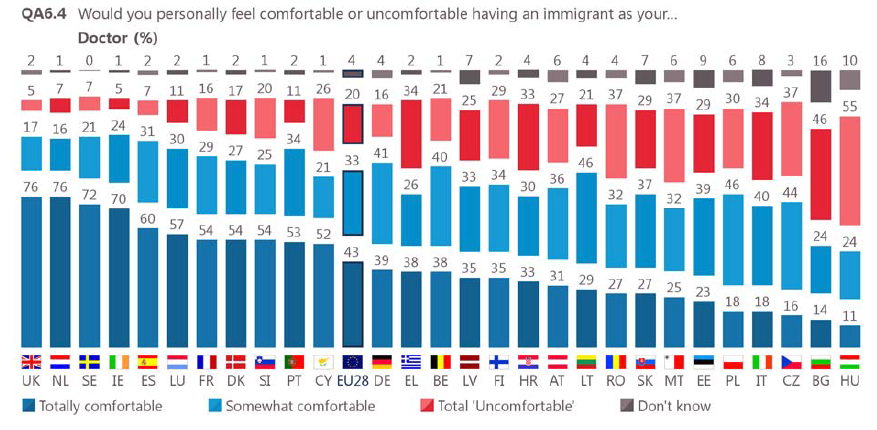
Figure 4. General feelings regarding having an immigrant as a doctor
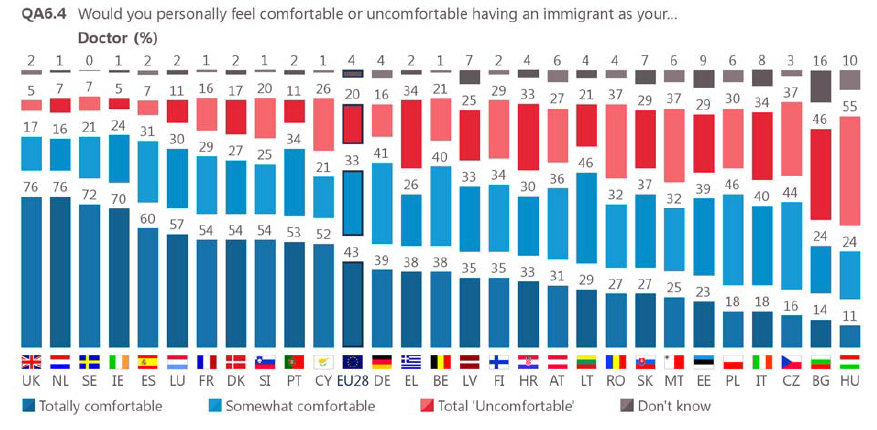
Figure 5. General perceptions about how successful is the integration of most immigrants among the EU countries

Figure 6. Views regarding the impact of immigration on crime problems
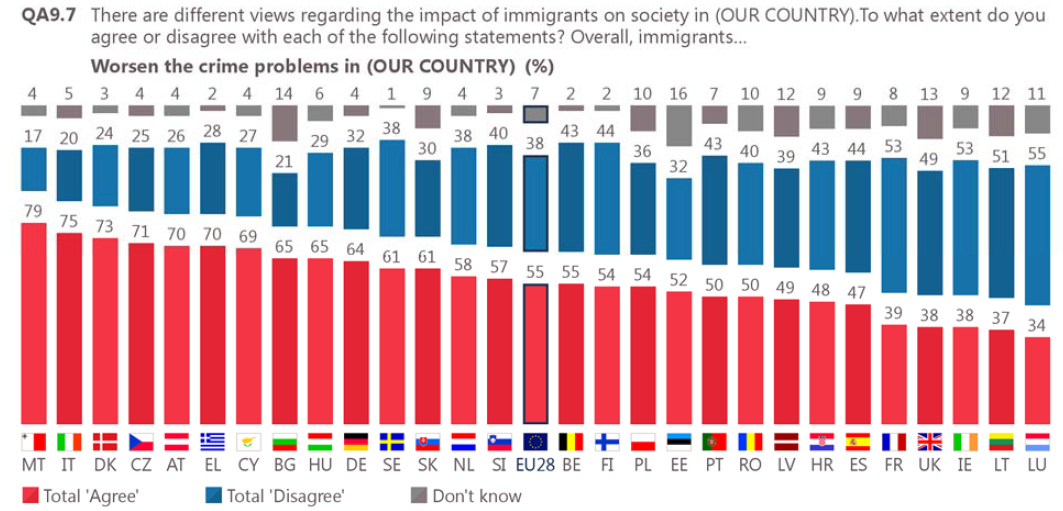
Figure 7. Views regarding integration programmes supporting integration of immigrants
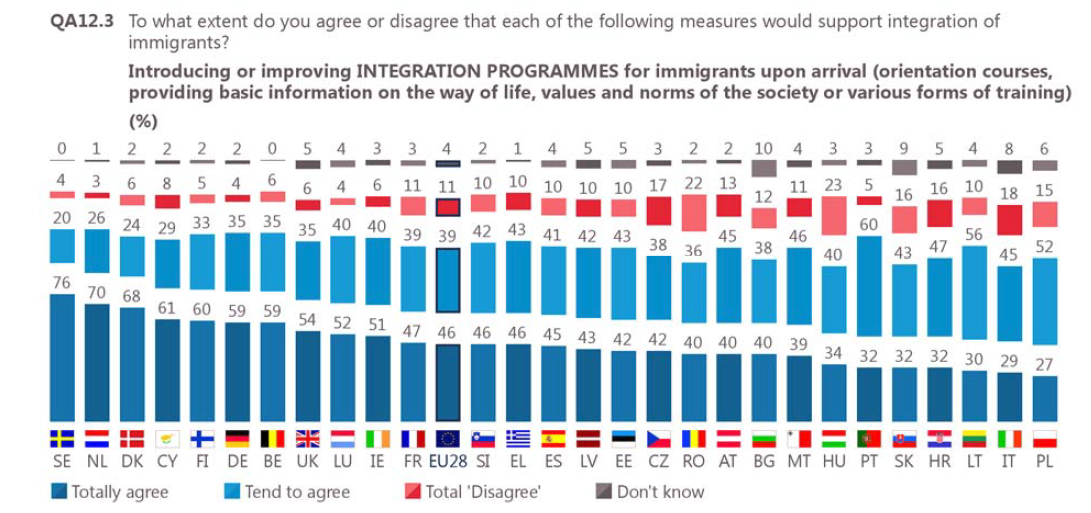
Figure 8. Views regarding language courses supporting integration of immigrants
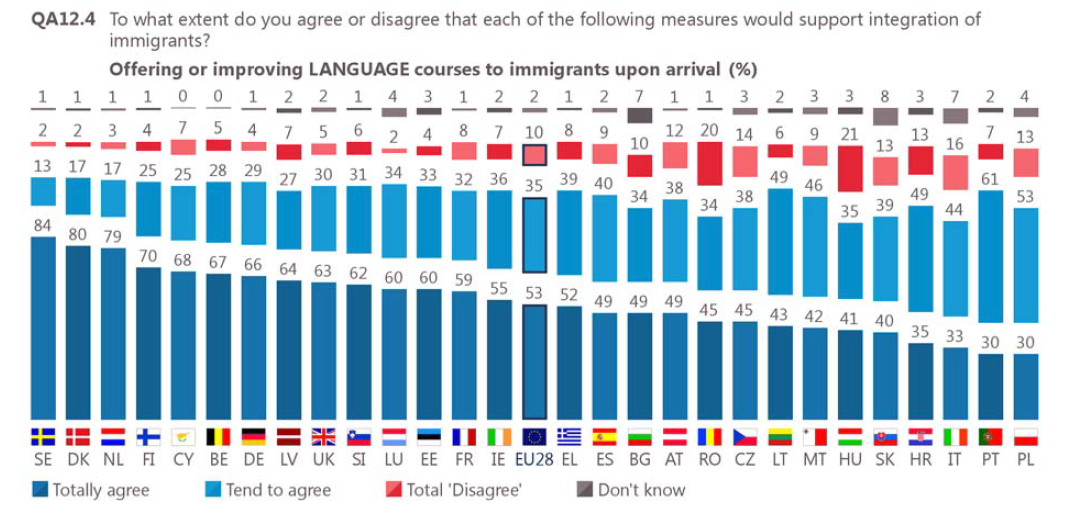
Figure 9. Views regarding enrolment of immigrants’ children in pre-school supporting integration of immigrants
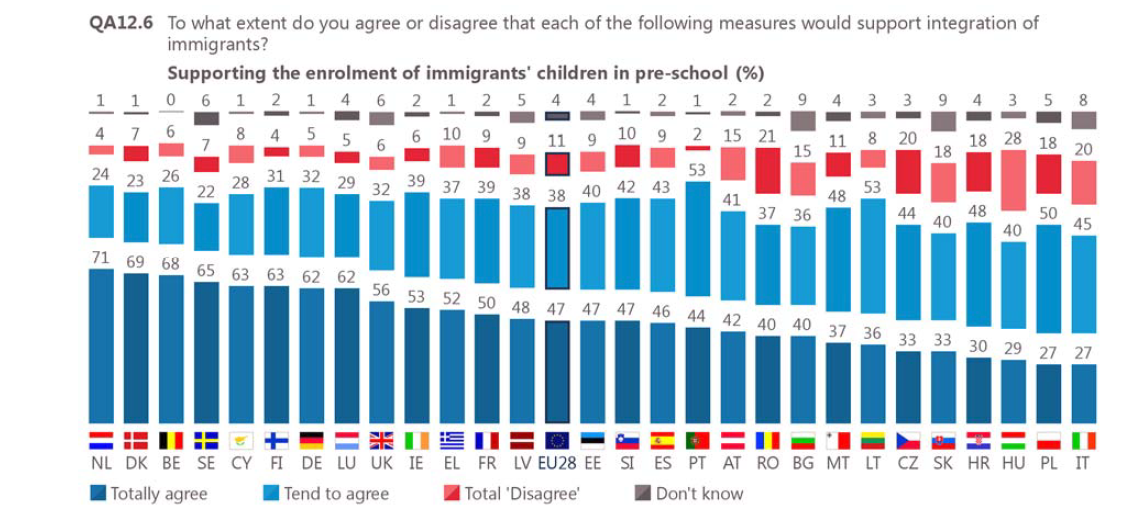
Figure 10. Perceptions regarding the impact of immigrants on society
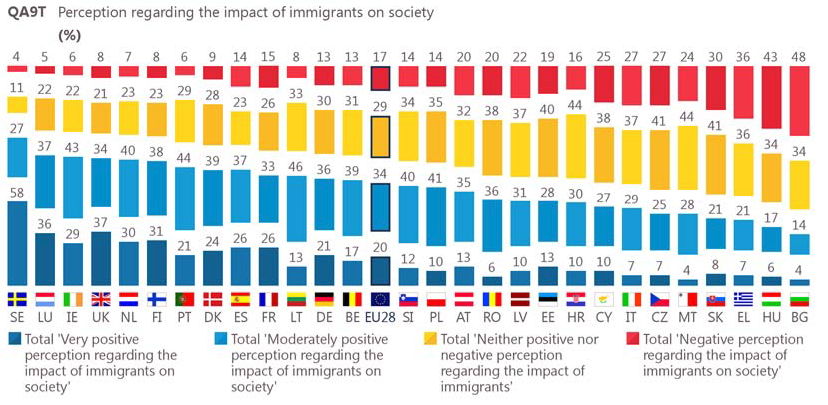
The EUI, RSCAS and MPC are not responsible for the opinion expressed by the author(s). Furthermore, the views expressed in this publication cannot in any circumstances be regarded as the official position of the European Union.

